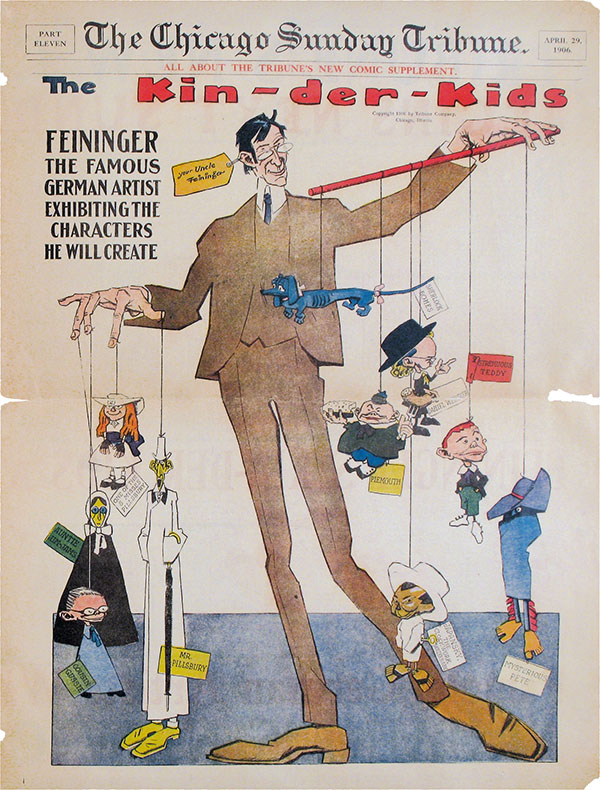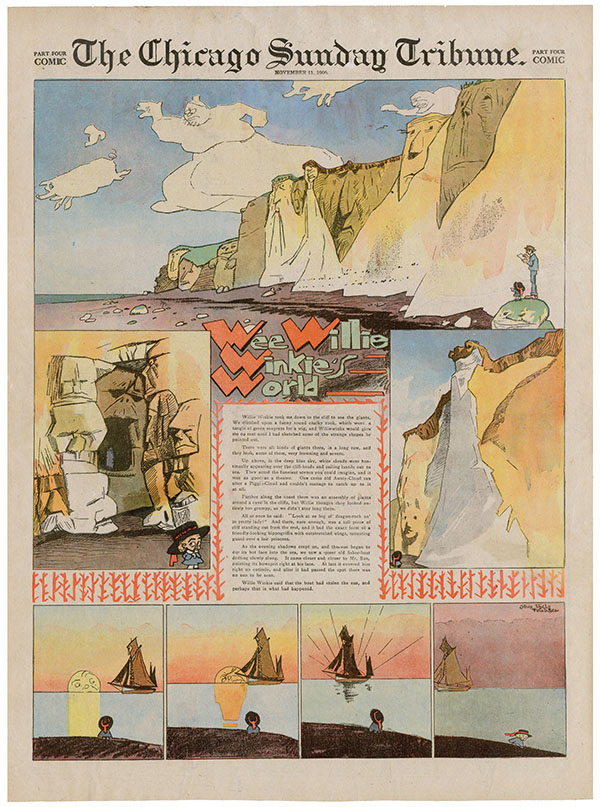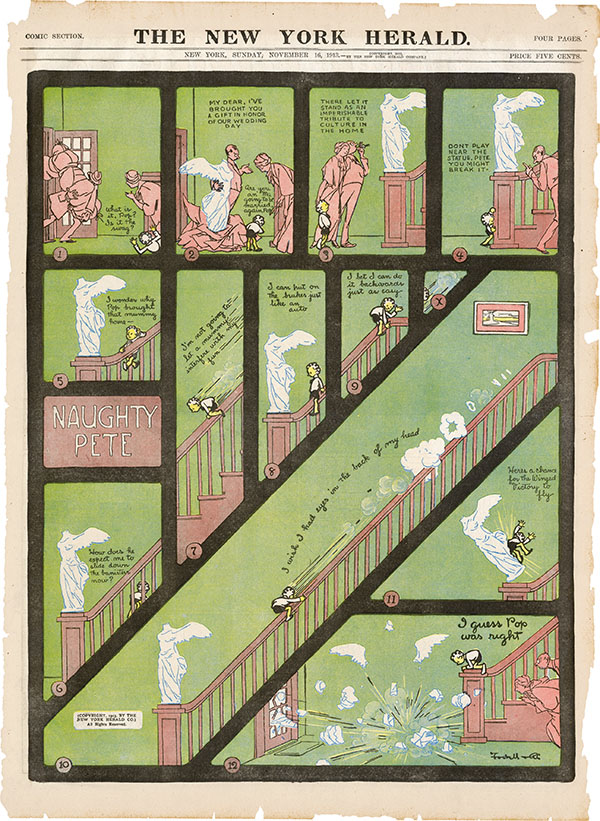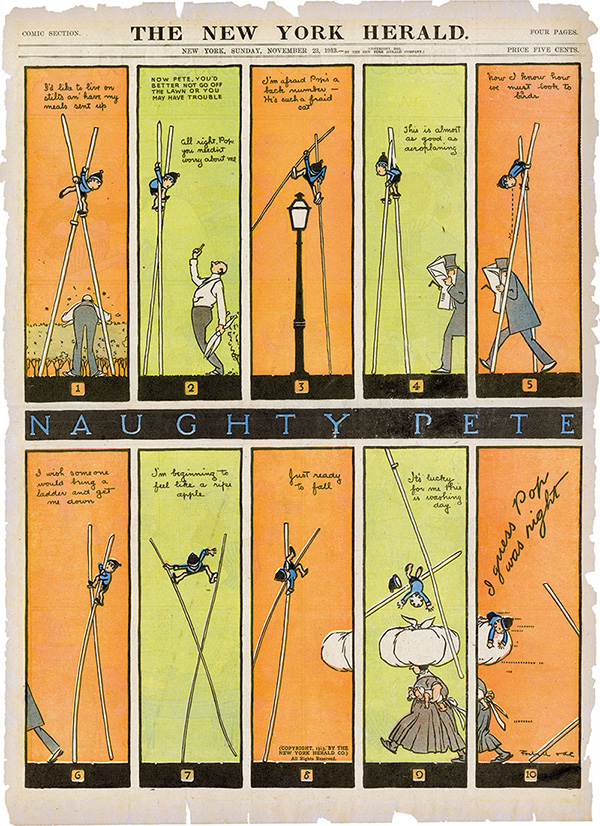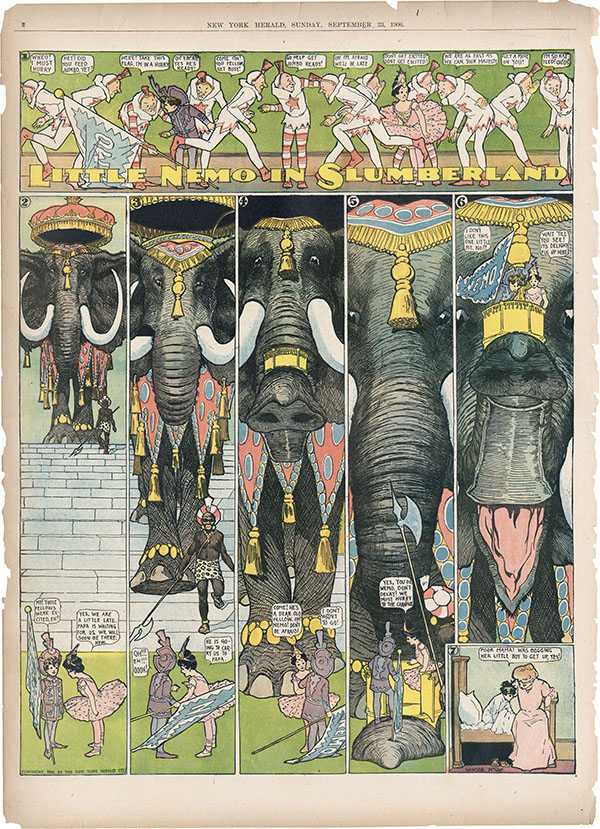ART-PRESENTATION: The Pioneers Of The Comic Strip
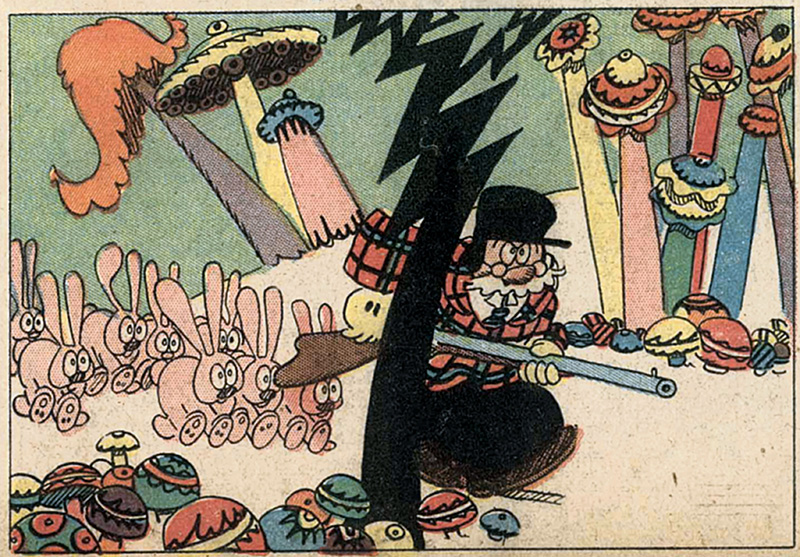 The legendary newspaper war between Pulitzer and William Randolph Hearst which lasted from 1895 to 1898, was waged in the comic strip supplements. In 1891, Hearst, who had recently come to New York from San Francisco, lured away Pulitzer’s entire staff of illustrators for the purpose of strengthening his own newspaper empire.
The legendary newspaper war between Pulitzer and William Randolph Hearst which lasted from 1895 to 1898, was waged in the comic strip supplements. In 1891, Hearst, who had recently come to New York from San Francisco, lured away Pulitzer’s entire staff of illustrators for the purpose of strengthening his own newspaper empire.
By Dimitris Lempesis
Photo: Schirn Kunsthalle Frankfurt Artchive
Of what were once a million pages of comic strips in the pioneering years, only few copies have survived. Schirn Kunsthalle Frankfurt in the first extensive thematic exhibition on the “Pioneers of the Comic Strip” presents over 200 pages of rare comic strips between 1905 and the ‘40s, by six exemplary illustrators. The exhibition also includes very rare original drawings by comic strip artists being shown to the public for the first time. In the exhibition, an individual space is devoted to each of the artists. Winsor McCay is considered the first Surrealist and the godfather of the early comic strip. He preformulated the entire spectrum of Surrealist expression. In his series Little Nemo in Slumberland, which was published in the New York Herald from 1905 onwards, every night in his dreams, King Morpheus’ vassals take the little boy Nemo into Slumberland so that the princess has a playmate, and he experiences adventures there. McCay is also regarded as the inventor of the animated cartoon, which is also addressed in the exhibition. Famous painter and Bauhaus teacher Lyonel Feininger began his artistic career working for 15 years as a caricaturist and comic illustrator. In 1906, the Chicago Tribune planned a new comic-strip supplement with original work by German illustrators and hired the artist, who was living in Berlin at the time, for two series: The Kin-der-Kids made a mad rush over oceans and continents, while the young boy in Wee Willie Winkie’s World, Feininger’s alter ego, questions the world in melancholy languor. Charles Forbell was among those many artists who, albeit only for a short yet extremely progressive time, devoted themselves to comic strips, but quickly vanished due to lack of success. In 1913, in the space of less than 18 months the graphic artist and illustrator designed unique color Sunday pages for his series Naughty Pete that were prominently staged by the publisher of the New York Herald on the colored title page of the supplement. One of the most important stylists of the comic strip in the 20th Century is Cliff Sterrett. His principal work Polly and Her Pals gives an account of the Perkins couple and daughter Polly, who is idolized by admirers. Over the years, the focus increasingly shifts toward the father and his daily struggle with the pitfalls of everyday life. Over the course of his career, Sterrett’s depiction of his figures develops from a nervous, organic line to clear geometric abstraction. In the late ‘20s, his comic strip seems to then literally explode in Modernist manner: psychedelic forests and fantastic plants, everything in the images is set in motion, the proportions shift, and the perspectives of the architecture seem to collapse, walls and floors are entirely covered by patterns. The reasons for this transition can be found in Sterrett’s home environment: he lived in the artist’s colony of Ogunquit in Maine, where he kept company with numerous visual artists, including Walt Kuhn, the definitive curator of the legendary Armory Show in New York in 1913, with whom he socialized on a regular basis. The comic strips of George Herriman take up an outstanding position. He was the only comic strip illustrator to be offered a job for life by his publisher, William Randolph Hearst, who gave him complete artistic freedom. No other comic strip of this period took greater artistic liberties, Krazy Kat is about a cat named Krazy who loves the mouse Ignatz, who counters Krazy’s unconditional affection by throwing a brick at her head, who in turn misinterprets this as proof of his love (a cycle of futile longing and desire). In the history of the comic strip, Krazy Kat constitutes the blueprint for all of the later small animal slapsticks ranging from Felix the Cat and Mickey Mouse to Tom and Jerry. With his successful and popular series Gasoline Alley, Frank King developed narration in real time for the comic strip. From 1921 onwards, one episode of the series was published in newspapers in across America every day from Monday to Sunday for more than three decades. The comic strip was stories from the everyday life of the bachelor Uncle Wald and his foundling Skeezix in an American suburb and takes place in real time, which results in parallels to the courses of readers’ lives. Social and political developments are taken up and depicted. The literary protagonists age with their real readers and accompany their everyday lives with comparable problems.
Info: Curator: Dr. Alexander Braun, Schirn Kunsthalle Frankfurt, Römerberg, Frankfurt am Main, Duration: 23/6-18/9/16, Days & Hours: Tue & Fri-Sun 10:00-19:00, Wed-Thu 10:00-22:00, www.schirn.de

